How Many Amp Hours Does a Group 27 Battery Typically Have
The typical amp hour rating of a Group 27 battery is one of the most frequently researched specs by RV owners, marine enthusiasts, off-grid solar users, and backup power planners. Understanding how much energy a Group 27 battery can store and deliver is essential to choosing the right battery for your needs. This article explores everything you need to know about Group 27 battery amp hour ratings—from definitions and typical values to factors affecting performance and real-world application tips.
- What Is a Group 27 Battery?
- Group 27 Battery Amp Hour Ratings: Typical Range and Overview
- Factors That Affect Group 27 Battery Amp Hour Ratings
- Use Cases Where Group 27 Battery Amp Hour Ratings Matter
- Real-World Testing: How Accurate Are Group 27 Battery Amp Hour Ratings?
- How to Extend and Optimize Your Group 27 Battery Amp Hour Performance
- Buyer’s Guide: Choosing the Right Group 27 Battery Based on Amp Hour Rating
- When One Group 27 Battery Isn’t Enough
- Mastering the Typical Amp Hour Rating of a Group 27 Battery
What Is a Group 27 Battery?
Group 27 batteries refer to a standardized size classification defined by the Battery Council International (BCI). These batteries are popular in a range of applications, from recreational vehicles (RVs) and boats to off-grid solar storage and backup power systems.
Key Physical Specs
Group 27 batteries typically measure:
Length: 12.1 inches (307mm)
Width: 6.8 inches (173mm)
Height: 8.9 inches (227mm)
Weight varies by chemistry, ranging from 50 to 75 pounds (22–34 kg). Most models come in 12V configurations and are available in flooded, AGM, gel, and lithium types.
Group 27 Battery Amp Hour Ratings: Typical Range and Overview
The typical amp hour rating of a Group 27 battery generally falls between 85 to 110 Ah for lead-acid types and can reach up to 120–140 Ah for lithium versions.
Common Amp Hour Ranges by Battery Type
|
Battery Chemistry |
Typical Ah Rating |
Notes |
|
Flooded Lead-Acid |
85–100 Ah |
Low cost, needs maintenance |
|
AGM |
90–105 Ah |
Maintenance-free, better cycle life |
|
Gel |
90–100 Ah |
Good for deep discharge, sensitive to charging rates |
|
LiFePO4 (Lithium) |
100–140 Ah |
Lightweight, high efficiency, long cycle life |
Real-World Implications
Amp hour rating determines how long your battery can power a given load. For instance, a 100 Ah Group 27 battery can theoretically power:
A 5A device for 20 hours
A 10A device for 10 hours
However, actual performance depends on discharge rate, temperature, battery age, and depth of discharge (DoD).
>>See also What is the Minimum Voltage for a Golf Cart Battery A Comprehensive Guide
Factors That Affect Group 27 Battery Amp Hour Ratings
Even if two Group 27 batteries are labeled the same, several factors can significantly influence real-world amp hour delivery.
1. Discharge Rate (Peukert's Law)
Amp hour ratings are typically measured over a 20-hour discharge period. Discharging faster (e.g., over 5 or 10 hours) results in reduced available capacity due to Peukert's Law.
Example:
A 100 Ah battery discharged over 20 hours may deliver 100 Ah.
Discharged over 5 hours, it may only deliver 80–85 Ah.
2. Temperature
Battery performance is highly temperature-dependent. At lower temperatures, chemical reactions slow, reducing usable capacity.
At 0°C (32°F), you may lose 20–30% capacity.
At –20°C (–4°F), capacity can drop by over 50%.
3. Depth of Discharge (DoD)
While lithium batteries are commonly rated for 80–100% DoD, lead-acid batteries should only be discharged to about 50% to maintain lifespan. This reduces usable amp hours in daily use.
4. Battery Age and Cycles
Batteries lose capacity with each charge/discharge cycle:
Lead-acid may lose 20–30% after 300–500 cycles.
Lithium (LiFePO4) maintains 80% capacity after 2000+ cycles.
Use Cases Where Group 27 Battery Amp Hour Ratings Matter
1. Off-Grid Solar Systems
Sizing your battery bank correctly means calculating total daily consumption (in watt-hours), dividing by system voltage, and selecting batteries with enough Ah to match that.
Example:
Daily load: 1,200 Wh
At 12V, this is 100 Ah
You’d need at least one or more Group 27 batteries (depending on DoD)
2. RV and Camper Applications
For RV users relying on a Group 27 battery for lighting, refrigeration, and charging devices:
90–100 Ah may last for 24–36 hours with light usage
Two Group 27 batteries in parallel provide 180–200 Ah for extended autonomy
Great! Here's Part 2 of the article “Typical Amp Hour Rating of a Group 27 Battery”, continuing from where we left off.
Real-World Testing: How Accurate Are Group 27 Battery Amp Hour Ratings?
Manufacturers often advertise amp hour ratings based on controlled lab conditions—usually at 25°C (77°F) and a 20-hour discharge rate. But how do those ratings hold up in actual use?
AGM Group 27 Battery Test (Deep-Cycle)
Model: Renogy Deep Cycle AGM 12V 100Ah
Test conditions:
Ambient temperature: 22°C
Discharge rate: 5 amps constant
Results:
Delivered capacity: ~94.2 Ah
Voltage sag began after ~18.5 hours
Battery fully discharged at 11.8V after ~19 hours
Conclusion: Under mild, controlled conditions, actual delivered Ah was about 94% of the rated 100 Ah.
Lithium (LiFePO4) Group 27 Battery Test
Model: Battle Born 12V 100Ah
Test conditions:
Ambient temp: 24°C
Discharge rate: 10A constant
Results:
Delivered capacity: 99.5 Ah
Voltage remained stable down to 10% SoC
Fully usable down to 0% DoD with integrated BMS
Conclusion: Lithium models consistently deliver near-100% usable capacity—even at higher discharge rates.
How to Extend and Optimize Your Group 27 Battery Amp Hour Performance
To get the most from your Group 27 battery’s amp hour rating, consider these best practices:
1. Use Battery Monitors
Battery monitors (like Victron BMV-712 or Renogy Battery Monitor) help track:
Real-time current draw
Amp hours consumed
Battery voltage and state of charge
This data allows more accurate management of your battery’s performance and health.
2. Keep Battery at Optimal Temperatures
If you're using batteries in extreme conditions:
Use insulation or heated battery boxes for cold climates
Provide ventilation and avoid high-heat areas in summer
This will stabilize chemical reactions and reduce capacity loss.
3. Avoid Deep Discharge (for Lead-Acid Types)
Discharging below 50% regularly will shorten the life of flooded or AGM Group 27 batteries. If you often reach below 12V, consider:
Using two batteries in parallel
Upgrading to LiFePO4, which tolerates deep discharge better
4. Match Battery Size to Daily Load
Rather than stressing a single Group 27 battery, size your system correctly. If your daily usage requires 100Ah, aim for at least 200Ah total capacity (to ensure longer life), which may mean using 2–3 batteries.
>>See also How Many Watts is a 24V Lithium Battery
Buyer’s Guide: Choosing the Right Group 27 Battery Based on Amp Hour Rating
Flooded Lead-Acid vs. AGM vs. Gel vs. Lithium
|
Chemistry |
Best For |
Lifespan |
Amp Hour Range |
|
Flooded |
Budget, backup systems |
2–3 years |
85–95 Ah |
|
AGM |
RVs, moderate deep cycle |
3–5 years |
90–105 Ah |
|
Gel |
Long-duration low loads |
4–6 years |
90–100 Ah |
|
LiFePO4 |
Heavy use, solar, marine, off-grid |
10+ years |
100–140 Ah |
Recommended Group 27 Batteries
Battle Born 12V 100Ah LiFePO4
3,000+ cycles @ 80% DoD
Lightweight (~30 lbs)
Excellent real-world capacity
Renogy Deep Cycle AGM 100Ah
Maintenance-free
Good for solar and RV
Durable build, solid output
Trojan T-1275 (Flooded)
Classic deep-cycle performance
Affordable but requires maintenance
Vmaxtanks SLR125 AGM
125 Ah true deep-cycle battery
High reserve capacity
Great for long-term discharge loads
When One Group 27 Battery Isn’t Enough
Group 27 batteries have a physical size limit, so their amp hour capacity is capped. For applications needing more energy, consider:
Parallel connection: Two 100Ah Group 27 batteries = 200Ah @ 12V
Series connection: Two 12V 100Ah = 24V 100Ah (for 24V systems)
batteries gives you flexibility and redundancy.
Mastering the Typical Amp Hour Rating of a Group 27 Battery
Understanding the typical amp hour rating of a Group 27 battery means going beyond the sticker on the box. Real-world performance depends on chemistry, temperature, usage habits, and charging patterns.
If you’re an RV adventurer, a solar system builder, or simply need backup power, the Group 27 battery remains a versatile and reliable option. By selecting the right type and using smart practices, you’ll maximize its usable capacity and long-term value.
Choosing the right power source starts with understanding key metrics like the typical amp hour rating of a Group 27 battery. From 85 Ah to 140 Ah depending on type, these batteries offer reliable performance across a variety of needs. Whether you're looking to power your RV for the weekend, run your off-grid cabin, or ensure peace of mind during blackouts, the Group 27 battery remains one of the most efficient and cost-effective options available. Make your energy decisions informed and future-proof by focusing on amp hours, chemistry, and real usage patterns.

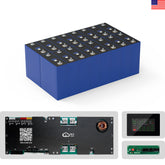

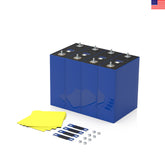

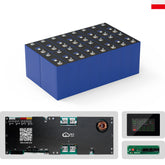

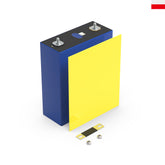

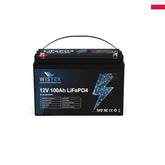
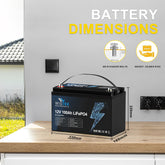
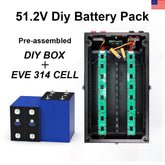

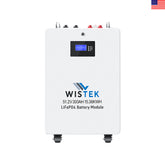
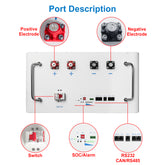
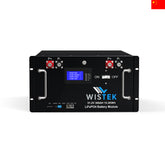
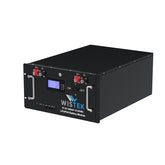


Leave a comment
All blog comments are checked prior to publishing